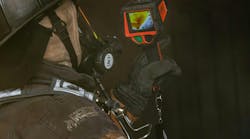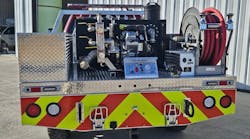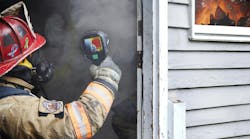With the evolution of the thermal imager (TI) in the fire service, we now see a distinct trend toward smaller, lighter and more capable devices at a lower cost. This was a predictable trend as quick advancements in technology cause the cost of that technology to fall, converting what was once unattainable into something that is now attainable. With the implementation of a new TI comes responsibility. The benefit of owning a TI lies solely on the training and interpretation of the operator.
We all know that thermal imagers are designed to process emitted infrared “heat signatures” and convert that information to an LCD screen to be interpreted by the operator. Whatever the cost, brand, resolution or complexity of operation, you cannot overcome the strengths or weaknesses of the firefighter’s individual capability to quickly recognize a heat signature as normal or abnormal.
Unusual environments
Recently, I talked with a firefighter who responded to a house fire that quickly became defined by light smoke in an extremely large residence. With additional investigation, the source location was condensed to a small, but complex concrete mechanical room located beneath the residence. When firefighters entered the structure, they were confronted with a multitude of electrical panels, general wiring and multiple pumps and motors all operating in close quarters and generating heat. This scenario created an environment bordering “thermal saturation,” meaning that most or all of the items in the field of view were close to or at the same temperature with very little definition apparent on the TI screen.
Investigations in such an unusual environment are hampered since a mechanical room is not the norm and becomes an atypical comparison of multiple systems generating heat under normal operations. This scenario is not a typical baseline process of locating an item that is obviously warmer than its surrounding objects. With additional investigation, the firefighters were able to isolate an overheated pump motor as the source of the light smoke, although it was obscured by numerous hot water pipes and valves.
In another incident involving an electrical odor, firefighters grabbed their TI to quickly ascertain an electrical panel malfunction as the main breaker had melted behind the panel filling the structure with a light haze. The firefighters quickly assessed the situation by using the TI to see the drastic temperature variation between the molten breaker and the rest of the interior wall.
These two “contrasting” examples are at opposite ends of the interpretation spectrum. We often speak of locating the seat of a fire, conducting primary search or finding extension of a fire in an attic or wall, but these applications usually create a sharp contrast of solid surfaces on the TI display. In many circumstances, especially in the case of investigations, the signs and clues are subtle and not as clearly defined making image interpretation anything but automatic.
A department may have fulfilled a wish list and purchased its first TI only to check that item off of its loose equipment list and move on to the next procurement need, overlooking the most essential element of TI use – training! Many Internet searches yield more information than you can process, but search “thermal imaging training” and you may be surprised at the scant amount of relevant training programs available for the fire service.
Once we move past the standard operating guidelines (SOGs) and explanations of technology and limitations, we fall into a black hole called applications. Every application is unique and situations may be similar, but appear vastly different on your TI display because of a host of variables, including the time of day, outside/inside temperatures, building materials, weather, access or location. Small volunteer departments see everything larger fire departments do, just not as frequently. This puts many small and volunteer departments at a distinct on-the-job training disadvantage as they are less likely to see the same situation twice.
The message is simple. Proper training with your TI develops a knowledge base of what is normal so you can immediately recognize that which is abnormal. Use your TI on calls that will help you develop greater familiarity with your imager such as car accidents and medical calls as well as routine inspections of heaters, ballasts, freezers, stoves, furnaces, plumbing, lighting and electrical panels.
Be sure to use your TI in daytime and nighttime situations because the environment, context and ambient temperatures can affect your speed and ability to interpret what your TI is telling you. Understanding your TI will help you make an informed decision so you can respond quickly and appropriately in the most critical situations.
JOHN HAYS is the Product Line Manager for Emergency Responders at Bullard. He has spent more than 13 years developing emergency responder products for the fire, rescue and police markets. Hays’ technical expertise in developing emergency responder products has been instrumental in advancing the use of thermal imagers in the fire service.
Connect with John
Email: [email protected]
pull quote:
Proper training with your TI develops a knowledge base of what is normal so you can immediately recognize that which is abnormal.






